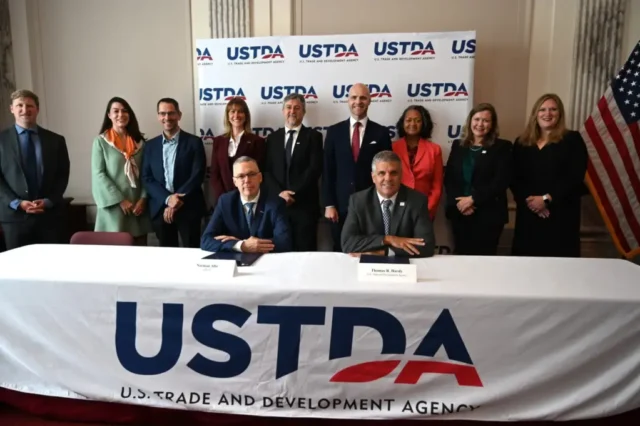In a move that could reshape digital connectivity for much of West and Northwest Africa, the U.S. Trade and Development Agency (USTDA) has committed support toward a feasibility study to extend the Medusa Subsea Cable from the Mediterranean coast to Africa’s Atlantic seaboard. The project, a joint collaboration with AFR-IX Telecom, seeks to explore the technical, commercial, and security implications of such an extension, with implications that may go far beyond cabling.
Signed recently in Washington, D.C., USTDA and AFR-IX formalised their cooperation in order to assess how best to bring high-speed subsea infrastructure to nations along Africa’s Atlantic coast, spanning up to 22 countries. The intent is not just to lay cable, but to ensure that the cable is built to trusted standards, provides resilient digital pathways, and reduces dependence on providers deemed less secure.
Table of Contents
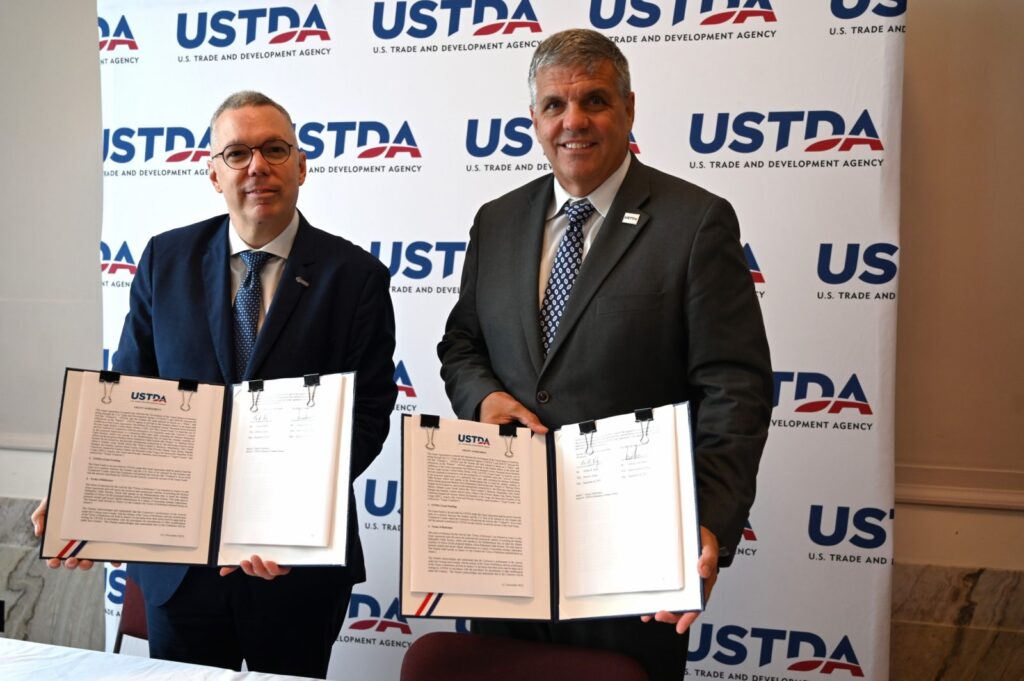
Stakes and Expectations: Beyond Mere Bandwidth
Subsea fibre optic cables are the arteries of modern digital life—powering cloud computing, enabling data storage, underpinning financial transactions, government services, and all the back-end systems of our increasingly connected world. For many African countries, existing connectivity is either inadequate or routed in ways that expose data to surveillance, delays, or instability. Extending Medusa promises to help redress that.
In USTDA’s view, this is also about geo-digital strategy. With rising concerns over infrastructure built or maintained by “untrusted” providers, the agency sees an opportunity to deploy U.S.-standard technologies and to promote partnerships that align with transparency, reliability, and cybersecurity. The involvement of U.S. firms in the upcoming study signals that future contracting—if the extension proves feasible—may further U.S. interests in both innovation and market access.
The CEO of AFR-IX, Norman Albi, emphasised the transformative potential of this infrastructure, saying that the Medusa extension could catalyse innovation, commerce, and social inclusion, especially for coastal nations that have long depended on circuitous or bandwidth-starved routes. He sees it as more than a cable project—it is digital lifeline infrastructure for unserved or underserved populations, with knock-on benefits touching education, health, financial inclusion, and governance.
What the USTDA Study Will Examine
The feasibility study to be funded by USTDA is designed to cover multiple essential dimensions:
- Technical viability: Engineering challenges of laying fibre across vast offshore distances, ocean bed mapping, potential hazards, redundancy, and maintenance requirements.
- Commercial model: Cost estimates; business case; risk assessments; projected demand for data traffic; potential return on investment; and ways to make tariffs and access affordable while still attracting private investment.
- Security and standards: Ensuring that the subsea cable is not only high-capacity but also secure against interception, sabotage, or compromise. The study will compare industry standards, best practices, supply-chain transparency, and look into trusted vs. untrusted infrastructure providers.
- Policy and regulatory environment: How coastal nations would regulate, own, and permit the cable; legal frameworks; rights-of-way; environmental impact; and cooperation among multiple countries sharing the Atlantic coastline.
The study will also aim to identify U.S. suppliers capable of contributing to various project components, thereby securing a supply chain that meets USTDA’s criteria for “trusted infrastructure.”
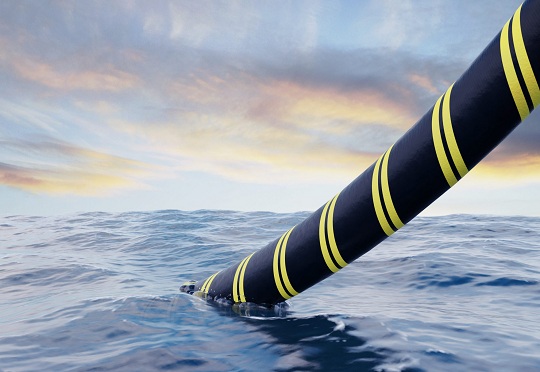
Implications for Africa’s Atlantic Coast & What Comes Next
If everything aligns—technical feasibility, commercial viability, favourable regulatory regimes—the Medusa extension could change digital landscapes along Africa’s Atlantic coast. For countries from say Morocco or Mauritania in the north, down to Guinea, Sierra Leone, Liberia, Côte d’Ivoire, Ghana, Nigeria, Cameroon and beyond, this means:
- Lower latency and faster, more reliable internet connections.
- Reduced cost of data transit (as routes become more direct).
- Enhanced resilience: redundancy to avoid being cut off when cables in other routes suffer damage.
- Better capacity to host content locally, serve cloud-based solutions, support e-governance, health, education, fintech, etc.
- Stronger bargaining power vis-à-vis foreign providers who may otherwise build, maintain, or operate infrastructure under opaque terms.
However, many challenges remain. Financing the actual build of the cable will likely cost hundreds of millions of dollars, if not more. Multiple jurisdictions will need to coordinate on licensing, environmental clearances, coastal infrastructure, and cross-border cooperation. There is also the risk that even after a feasibility study, investor appetite might be tepid if perceived risks (political, geological, security) are high.
In the near term, USTDA is soliciting proposals from U.S. companies to conduct specific components of the study. The hope is that through rigorous analysis, costed plans, risk assessments, and a transparent roadmap, this project can become “bankable”—in other words, attractive to lenders, development finance institutions, and private investors.
The Bigger Picture: Digital Connectivity, Sovereignty & Global Partnerships
This project is part of a broader trend: African nations, and their partners abroad, recognise that digital infrastructure isn’t just technical—it is strategic. Who owns, builds, maintains, and secures the cables that carry your data matters for sovereignty, privacy, and economic power.
The U.S., through USTDA, is positioning itself as a preferred partner in this space. By committing to standards, transparency, and trusted supply chains, it aims to counterbalance actors whose involvement has stirred concerns over security or lack of openness. From the U.S. side, the extension of Medusa is as much about helping Africa as it is about shaping the future architecture of global digital infrastructure.
For Africans, there’s reason for cautious optimism. When such projects succeed, the rewards are broad: better connection speeds, lower costs, more innovation, and greater inclusion. But equally, the failures—or stunted projects—teach many lessons about cost, governance, and the non-technical obstacles that can derail even the best-conceived infrastructure plans.
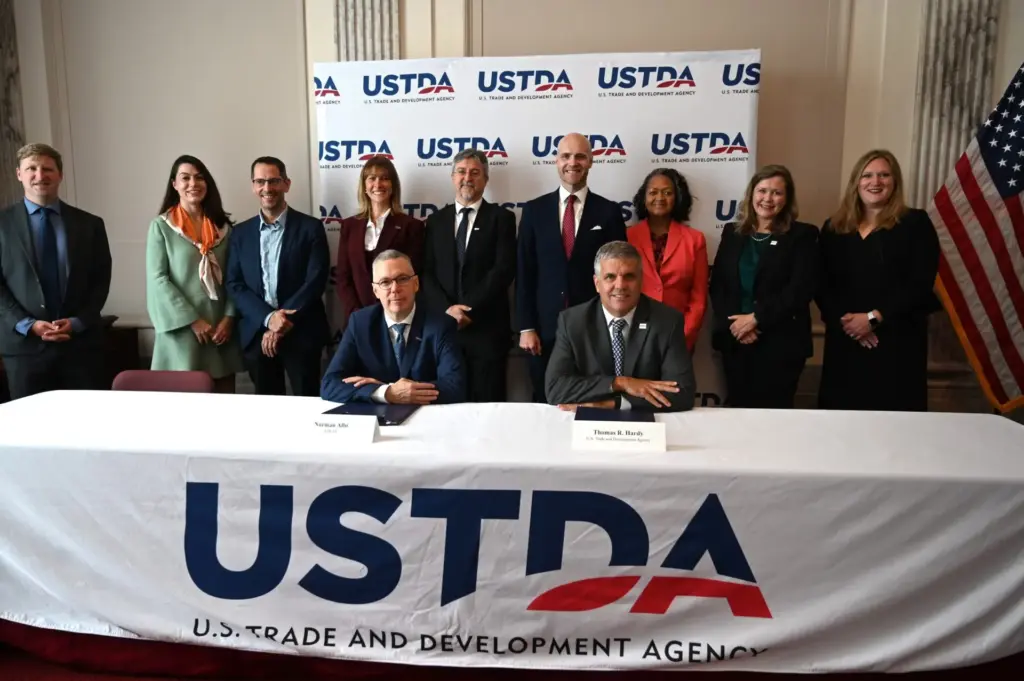
Conclusion
The backing of USTDA for a study to extend the Medusa subsea cable to Africa’s Atlantic coastline marks a milestone in the push for more secure, resilient, and inclusive digital infrastructure. If the study confirms the possibility of building this extension, and if governments, private sector actors, and investors align, the benefits could be far-reaching—improving lives, strengthening economies, and altering how Africa connects to the rest of the world.
It is early days yet. The feasibility study will reveal whether ambitions match reality. But already, the move signals that many believe that the future of Africa’s digital destiny includes the Atlantic — not only as a border, but as an opportunity.
Join Our Social Media Channels:
WhatsApp: NaijaEyes
Facebook: NaijaEyes
Twitter: NaijaEyes
Instagram: NaijaEyes
TikTok: NaijaEyes




































